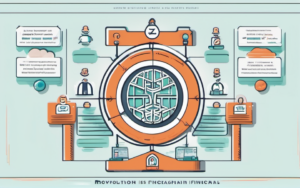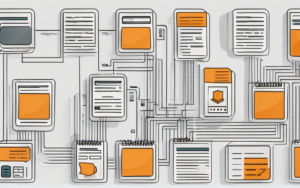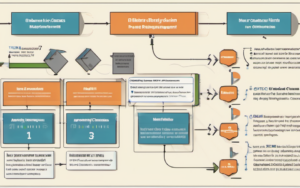The music industry, like many creative fields, has long struggled with fair compensation for artists. Getting paid what you’re owed can be a monumental task, often involving complex negotiations, lengthy delays, and frustrating bureaucratic hurdles. But a revolutionary technology is emerging that promises to change this: Blockchain royalties offer a new path towards transparent and efficient compensation for artists. Let’s explore how this technology is reshaping the landscape of artist rights and payments.
1. Introduction
1.1 The Problem of Artist Compensation
For decades, artists have faced significant challenges in receiving fair compensation for their work. Traditional systems often involve intermediaries like record labels, publishers, and distributors, each taking a cut of the profits. This complex web of agreements often leads to delays in payment, inaccurate royalty calculations, and a lack of transparency. Many artists struggle to track their royalties effectively, leaving them vulnerable to exploitation and underpayment. This opaque system leaves artists feeling powerless and undervalued.
This lack of transparency and control extends beyond music, impacting visual artists, writers, and other creatives who often rely on unpredictable income streams. The need for a more equitable and efficient system is clear.
1.2 Blockchain Technology: A Potential Solution
Blockchain technology, best known for its role in cryptocurrencies like Bitcoin, offers a potential solution to these long-standing problems. Its decentralized and immutable nature ensures transparency and security in recording and tracking transactions. This makes it ideal for managing royalties, providing artists with a reliable and verifiable record of their earnings. By eliminating intermediaries and automating the payment process, blockchain can streamline royalty distribution and ensure artists receive their fair share. This represents a significant shift towards greater autonomy and control for artists.
2. How Blockchain Works for Royalty Payments
2.1 Smart Contracts: Automating Royalty Distribution
Smart contracts are self-executing contracts with the terms of the agreement directly written into lines of code. These contracts, stored on the blockchain, automatically distribute royalties to artists based on pre-defined criteria, such as the number of streams, sales, or downloads of their work. This automation eliminates the need for manual processing and reduces the potential for errors or delays. The process becomes significantly faster and more efficient.
This level of automation ensures that artists receive their payments promptly and accurately, reducing the administrative burden often associated with royalty collection. This also helps to build trust between artists and their audience.
2.2 NFTs and Ownership Verification
Non-Fungible Tokens (NFTs) are unique digital assets that can represent ownership of artwork, music, or other creative works. NFTs, recorded on the blockchain, provide irrefutable proof of ownership, preventing unauthorized copying or distribution. When an NFT is sold, the smart contract automatically triggers royalty payments to the original artist, regardless of how many times the NFT is resold. This ensures artists continue to earn from their work long after the initial sale.
This mechanism allows artists to directly benefit from the secondary market sales of their work, a significant advantage not offered by traditional systems. It allows for continuous income generation.
2.3 Transparency and Traceability
Blockchain technology provides complete transparency into the entire royalty distribution process. Artists can easily track their earnings, see how royalties are calculated, and verify that they’ve received their fair share. This accountability eliminates the potential for disputes and ensures fairness. The immutable nature of blockchain means that the data cannot be altered or manipulated, fostering trust and accountability.
This enhanced transparency empowers artists, enabling them to confidently monitor their financial performance and identify any irregularities. The immutable nature of the blockchain is key to its reliability.
3. Benefits for Artists
3.1 Fair Compensation and Reduced Exploitation
Blockchain royalties offer artists a fairer system of compensation, reducing the likelihood of exploitation. By automating payments and eliminating intermediaries, artists receive a larger share of the revenue generated from their work. This increased control over their earnings helps them to build sustainable careers.
This is a significant step towards addressing the historical power imbalance between artists and large corporations. It empowers artists to negotiate more favorable terms and secure better payment agreements.
3.2 Direct Engagement with Fans
Blockchain technology enables artists to connect directly with their fans, bypassing traditional gatekeepers. They can sell their work directly to fans through platforms using NFT technology, fostering stronger relationships and building a loyal community. This reduces reliance on intermediaries, allowing artists to capture a larger share of the revenue and building their own brand.
This direct-to-fan model also fosters a deeper sense of community and loyalty. It enables artists to engage more effectively with their audiences.
3.3 Enhanced Control Over Their Work
With blockchain technology, artists gain greater control over their creative output and intellectual property rights. They can define the terms of their contracts, specify how royalties are distributed, and track their earnings with complete transparency. This enhanced control allows artists to make informed decisions about their career paths.
This enhanced autonomy is crucial for artists, enabling them to pursue their creative visions without the constraints of traditional industry structures. It helps artists to retain their rights and artistic integrity.
4. Examples of Blockchain Platforms for Artists
4.1 Platform A: Features and Functionality
[Insert details about a specific blockchain platform for artists, focusing on features and functionality. Include a link to the platform’s website.] For example, this platform may offer features like automated royalty payments, NFT minting capabilities, and a marketplace for artists to sell their work directly to fans.
This is just one example of many platforms leveraging blockchain technology to revolutionize artist compensation and empower creators.
4.2 Platform B: Features and Functionality
[Insert details about a second blockchain platform for artists, highlighting key features and functionality. Include a link to the platform’s website.] This platform might focus on specific niches or offer unique features not found on other platforms, such as collaborative tools or community features.
Exploring different platforms allows artists to choose the solution that best fits their specific needs and goals.
4.3 Platform C: Features and Functionality
[Insert details about a third blockchain platform for artists, emphasizing its unique capabilities. Include a link to the platform’s website.] This platform could focus on a particular art form or have a unique approach to royalty distribution and NFT management.
The availability of diverse platforms ensures that artists can find the perfect fit for their individual requirements.
5. Challenges and Limitations
5.1 Scalability and Transaction Fees
One of the challenges of implementing blockchain technology for artist royalty management is scalability. As the number of transactions increases, the network can become congested, leading to higher transaction fees and slower processing times. Finding solutions to improve the scalability and efficiency of blockchain networks is crucial for widespread adoption.
This scalability issue needs to be addressed before blockchain solutions can be truly effective for a large number of artists.
5.2 Technological Barriers to Entry for Artists
Another challenge is the technological barrier to entry for artists. Not all artists are tech-savvy, and navigating the complexities of blockchain technology can be daunting. User-friendly interfaces and educational resources are needed to make these technologies accessible to all artists. Simplification of the technology is necessary for widespread adoption.
5.3 Legal and Regulatory Uncertainty
The legal and regulatory landscape surrounding blockchain technology is still evolving. The lack of clear legal frameworks can create uncertainty for artists and platforms, hindering the widespread adoption of blockchain solutions for royalty management. Clearer legal guidelines are essential for fostering trust and encouraging greater use. The legal framework needs to catch up with the innovation.
6. The Future of Blockchain in the Art World
6.1 Potential for Growth and Innovation
Despite the challenges, the potential for growth and innovation in the use of blockchain for artist royalties is significant. As the technology matures and becomes more accessible, it is poised to transform the way artists are compensated and how they interact with their fans. This will undoubtedly lead to a more equitable and sustainable art ecosystem.
The future looks bright for artists who choose to embrace blockchain technology.
6.2 Collaboration and Community Building
Blockchain technology can facilitate collaboration and community building among artists and collectors. Platforms can create environments where artists can connect with each other, share resources, and build strong communities around their work. This fosters a more supportive and collaborative ecosystem.
This collaborative aspect will further empower artists and create a more thriving creative landscape.
6.3 Addressing Current Challenges
Addressing the challenges related to scalability, user-friendliness, and legal uncertainty is crucial for unlocking the full potential of blockchain technology in the art world. Continued innovation and collaboration between developers, artists, and policymakers are needed to create a truly effective and accessible system for managing blockchain royalties. This collaborative effort will pave the way for wider adoption and acceptance.
The integration of blockchain royalties presents a significant opportunity for artists to reclaim control over their intellectual property and ensure they receive fair compensation for their work. By embracing this technology and advocating for its wider adoption, artists can build more sustainable and equitable careers, fostering a healthier and more vibrant creative landscape. For artists and collectors alike, understanding and adopting these new technologies will be crucial for navigating the future of the art world.




